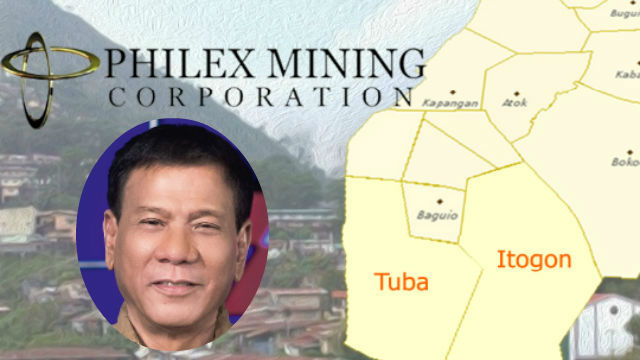TUBA, Benguet – Philex Mining Corporation’s sustained and enhanced practice of responsible mining over the past several decades has caught the attention of not only some members of the House committee on natural resources but also President Rodrigo Duterte, who is a staunch advocate of responsible mining in the country today.
President Duterte, in Tuesday’s press briefing in Malacanang, gave special mention to Philex for its ability to regreen a mined out area in Sibutad, Zamboanga del Sur with direct reference to its existing best practice of maintaining its mining forest in its Padcal mines here.
The Chief Executive had been mine-bashing over the past several weeks constantly reminding mining companies to do their activities pursuant to international standards to meet the stringent requirements imposed by Environment Secretary Gina Lopez.
“Modesty aside, we really are what most if not all of our stakeholders see us—like some kind of a ‘poster-boy’ for the mining industry,” the company’s CEO and president, Eulalio Austin, Jr., said. “It cannot be denied that Philex Mining has adhered to its obligations as a responsible miner throughout its six decades of operations.”
Further, Duterte mentioned Philex Mining’s cleanup and rehabilitation efforts in Balog Creek, in the Benguet town of Itogon, amounting to more than P1 billion. A tributary to the Agno River, the creek was where the company’s Tailings Storage Facility No. 3 (TSF3), at its Padcal mine, discharged nontoxic tailings and water onto it on Aug. 1, 2012, following historically unprecedented rains brought about by two successive typhoons.
Finance Secretary Carlos Dominguez III, who has been a staunch supporter of responsible mining, has also been reported in the media as having cited Philex Mining’s “excellent record” in dealing with challenges brought about by natural disasters, referring to the 2012 accident in Padcal mine, which is being hosted by the Benguet towns of Tuba and Itogon.
Philex has been proactive in environment management with the building of its first tailings facility in 1967 even before the enactment of the Pollution Control Law in 1976.
Further, the company pioneered its community-based reforestation as a source of livelihood for indigenous peoples in its host and neighboring communities in the 1960s even before the emergence of the United Nations Educational, Scientific and Cultural Organization’s Man and Biosphere Program in 1971.
The mining company also established its own materials recovery facility (MRF) in 1998 way ahead of the enactment of Republic Act (RA) 9003 of the Ecological Solid Waste Management Act of 2000.
Philex was the first metallic mine in the country to obtain ISO 14001 Certified in 2002 dwelling on Environmental Management System even before the issuance of Department Administrative Order (DAO) 2003-14 which prescribes the guidelines for Self-Regulation toward Improved Environmental Performance handed down by the Department of Environment and Natural Resources.
Moreover, it achieved the sustainability reporting compliant in global reporting initiative (GRI) – G4 guidelines in relation to reports on economic, environmental and social best practices.
Philex also obtained its integrated management system in 2015 with existing certifications ISO14001, BS OHSAS 18001 issued in 2007.
Under DAO 2010-21, Sec. 171 a Contractor/Permit Holder shall allocate for its annual environment-related expense a percentage approximately a minimum of three to five (3-5%) of its direct mining and milling costs depending on the environment/ geologic condition, nature and scale of operations and technology employed.
However, from 2013-2016, Philex was able to spend an average of 12.75 percent of its direct mine and milling cost annually for environmental protection.
On reforestation and watershed management, Philex produced some 250,000 assorted seedlings annually with an expanded plantation area of some 100 hectares that will be maintained for not less than three years. Since 1987, the company reforested some 2,800 hectares of its tenement area with over 8 million assorted trees and with a 90 percent survival rate.
By HENT
















We love our home and we truly believe that “A work of man is a gift of God”.